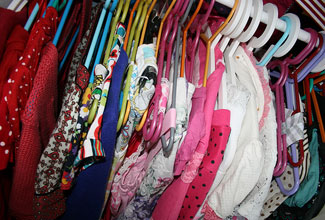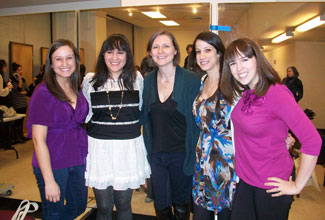So you absolutely love fashion, huh? To the point where you dream about Mercedes-Benz Fashion Week like a kid on Christmas Eve? That’s great and all, but the real question is: How do you land a job writing about the trends and styles you’re spotting? It’s no secret that breaking down the (really heavy) door into the fashion-writing biz is difficult. But you’re in luck! In honor of Ed happily trading his winter pea coat for his spring blazer, he’s sharing a few highly coveted tips from the editors who do score front-row seats at Fashion Week—and get to write all about it.
Rule No. 1, according to Brooke Kosofsky Glassberg, Copywriter for BareNecessities.com, is to learn the difference between a fashion market editor and a fashion writer. “Being a fashion editor is more about generating ideas, researching, translating the latest trends for readers, and telling a story without resorting to clichés,” she says. In short, fashion market editor = you choose the clothing and accessories featured in the magazine. Fashion writer = you write about them. Glassberg says she got to be the latter by luck. “Every boss I ever had happened to cover the style pages. To break into fashion writing, you need to not only be a fashion person but a words person, too.”
Glamour’s former resident (and internationally well-known) style star, executive online fashion and beauty editor Susan Cernek, knows a thing or two about style—and how to write about it. Perhaps it’s because she started in the market department of ELLE as an assistant, “but I always had my eye on the text on the fashion pages,” she says. She worked all the way up to fashion news editor there and later became the fashion and beauty director of Glam Media. Her Web-based advice is good news for whippersnappers who don’t have a lot of experience just yet.
“Start a blog focusing on fashion—but with a very particular point of view,” she says. “It can be as narrow as brightly colored socks to international runway shows around the world. Not only will it help you pay attention to current trends while staying in the know about this fast-paced industry, but you’ll be able to give yourself assignments and practice working on a deadline.”
Ed wouldn’t write an article jam-packed with career advice without taking a moment to mention the importance of internships—and Glassberg offers some direction on this as well. “If you want to write about style,” she says, “take internships in the features department instead of the fashion closet and make your interests known to the appropriate editors.”
Once you have your foot in the door, Cernek says to “start small by asking to work on the magazine’s social media outlets, like Facebook and Twitter. These areas are at the most granular level and because they’re new mediums, they’ll give you more flexibility.”
Amanda Elser, the Fashion and Beauty Editor at The Knot, started as an intern at Harper’s Bazaar. “I never thought I was above doing anything from getting coffee to making copies, but mid-way through my internship I sat down with my supervisor and told her that I was happy to write up blog posts on the magazine’s website. Even though there was already an entire staff who was willing to post, they had a last-minute story that came up and since they knew I was a journalism major, they asked me.”
See, Edsters, it’s not as hard as you think. And now that you’ve heard from these lovely magazine insiders, all you you need to do now is start writing!




 Event Recap: How to Freelance When You Have a Full-Time Job
Event Recap: How to Freelance When You Have a Full-Time Job